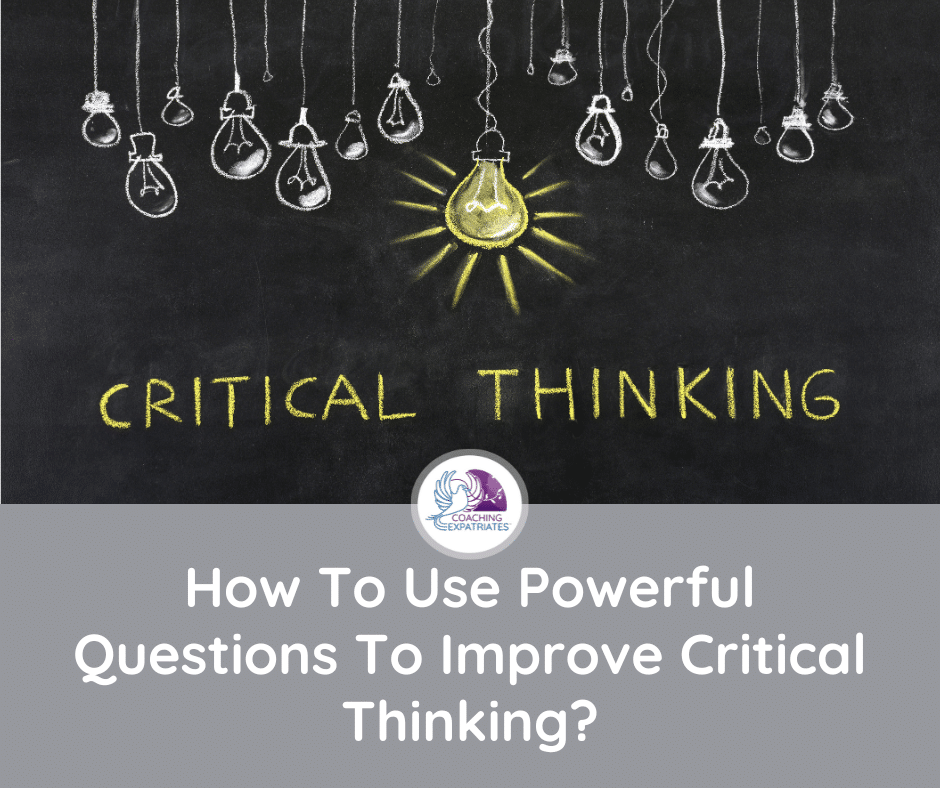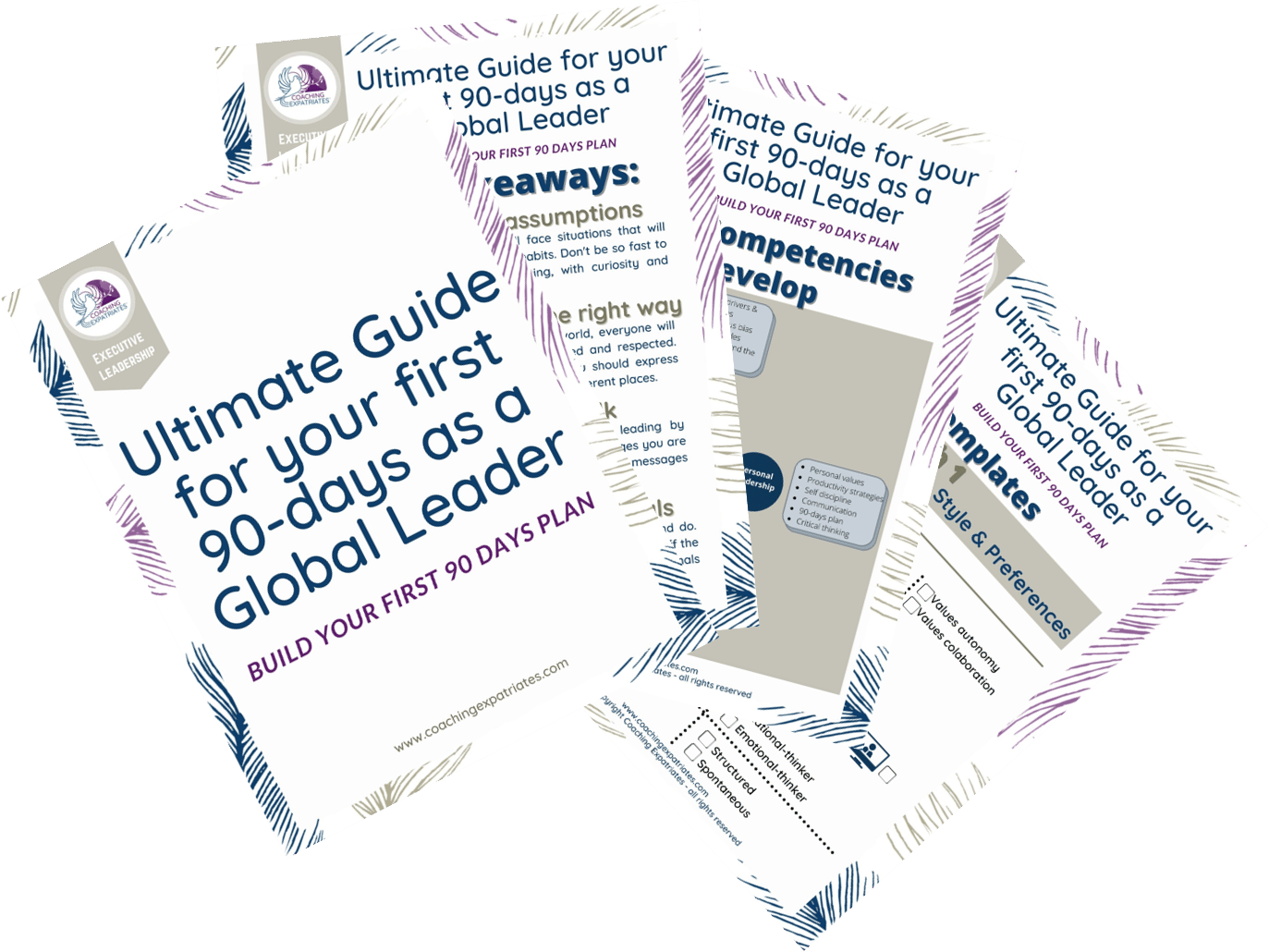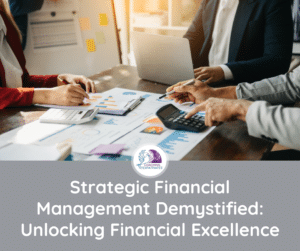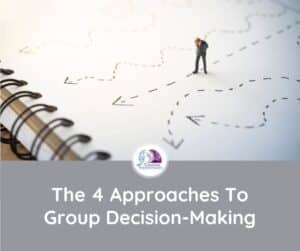Welcome to a journey that explores the extraordinary potential hidden within the art of asking questions. In this blog post, we’ll embark on a quest to discover the essence of powerful questions, unveil their significance in the realm of global leadership, and unearth the multitude of corporate scenarios where they can work wonders. From the transformative SPARK technique to real-world examples and book recommendations, we’ve got it all covered!
So, what exactly are powerful questions? At their core, these inquiries are not your run-of-the-mill, everyday simple questions. They’re more like supercharged conversation starters that have the ability to ignite deep introspection, spark creative and critical thinking, and forge strong connections. We’ll start our journey by dissecting the definition of powerful questions and understanding what sets them apart in the art of communication.
As we dive deeper into the world of leadership, we’ll explore why using powerful questions is an essential skill for global leaders. With the ever-evolving challenges of today’s interconnected world, these questions act as a beacon of guidance, helping leaders navigate the complexities of cross-cultural interactions, decision-making, and team management. Not exactly sure how it happens? We’ll uncover how they foster understanding, drive innovation, and promote autonomy in decision-making, making them indispensable tools for leaders in multinational organizations.
Defining "Powerful Questions"
Powerful questions are thought-provoking and open-ended inquiries that stimulate deep thinking, promote meaningful conversations, and encourage individuals to explore their thoughts, feelings, and perspectives. Also called “coaching questions,” these beautiful questions are designed to uncover insights, generate or challenge new ideas, and facilitate personal growth, problem-solving, or decision-making. They often challenge assumptions, broaden perspectives, and invite reflective exploration, making them valuable tools in various contexts, such as coaching, leadership, therapy, decision-making and problem-solving. Powerful questions typically avoid simple “yes” or “no” answers and instead encourage individuals to engage in critical thinking and self-discovery.
Using powerful questions is not just a skill to be used in coaching relationships. Every manager, in fact, every employee can use it as a powerful tool in their current situation. Whether you’re navigating critical issues in your career goals or facing difficult decisions in real life, asking the right questions and follow-up questions can make a significant difference. With a bit of practice, honing this skill can help you gain deeper insights, make informed choices, and ultimately, achieve your objectives more effectively.
Many leaders believe that in order to be effective, confident, and assertive, they have to possess all the knowledge and answers. But from my experience, sometimes the best answer or reaction is a powerful question. I’ll show you why and how.
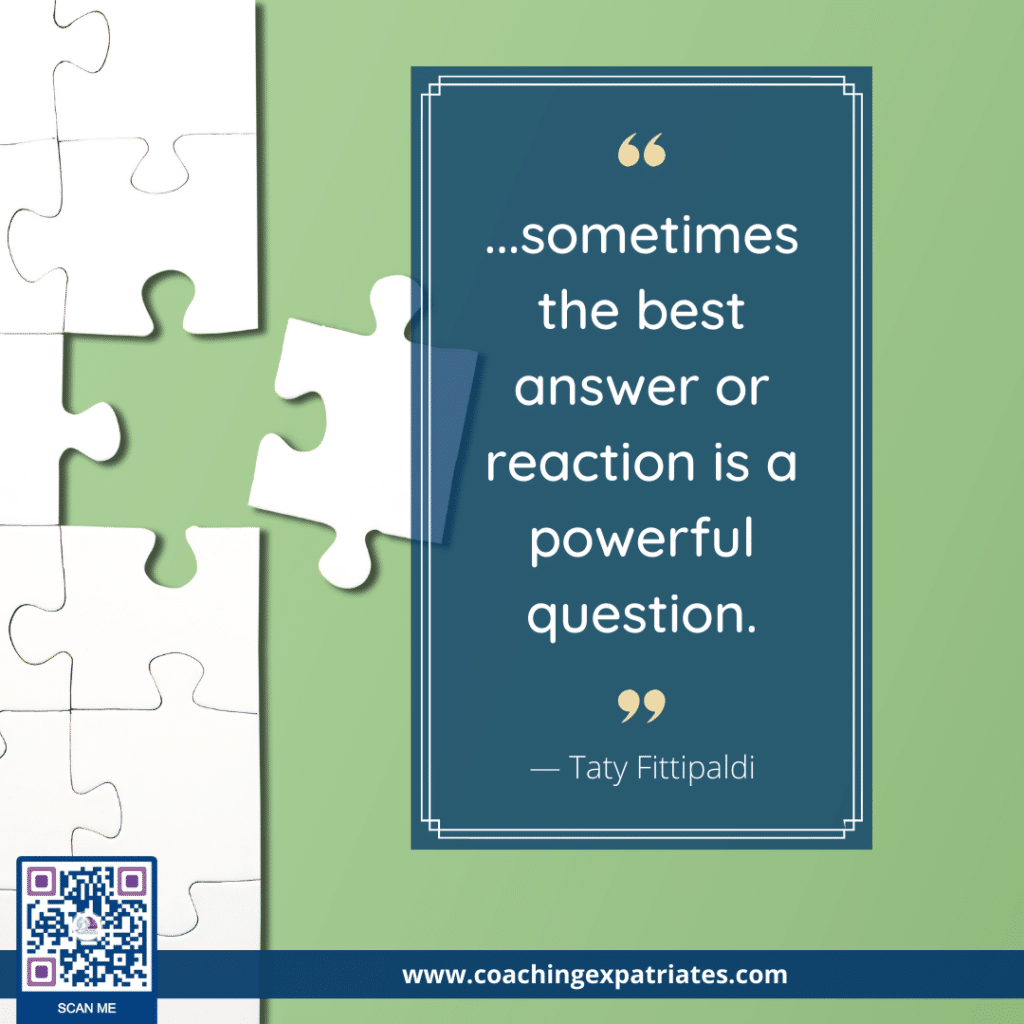
Why Is Using Powerful Questions Important In Global Leadership?
Have you ever wondered what sets a truly remarkable leader apart from the rest? Well, it’s not just about charisma, having the correct answer, or a fancy job title. It’s about asking the right questions. And not just that, asking the right questions without having an answer in mind. Yep, you heard me right! Those thought-provoking, mind-bending, and sometimes even eyebrow-raising questions can be your secret sauce to success in the world of global leadership.
During a not-so-favorite moment in my personal life, I once faced a very personal challenge at work that provoked many mixed feelings for me. The challenge, the work, and the people in it made me make a decision that affected both my personal and professional lives. I couldn’t make peace with the whole situation and move on with my new decision. While talking with a good leader, she asked me, “What would they have to tell you today to make you regret your decision?” This powerful question made me realize that there was absolutely nothing in the world people could say and do to make me change my decision. My mindset quickly moved from “this happened to me” to “I am at choice; I chose my new destiny.” And with that, I was able to finally move on with my daily life.
You see, global leadership is a bit like navigating a labyrinth – it’s complex, filled with twists and turns, and you can’t always see what’s around the corner. This is where powerful questions come into play. They’re like your flashlight in that dark, winding maze of international business and diplomacy. When you ask the right and proper questions in a situation, you gain a deeper understanding of different people, cultures, perspectives, and challenges. You also help other people gain a deeper understanding, too, like in my example above. You open the door to meaningful conversations that bridge gaps and foster collaboration with new perspectives.
But it’s not just about understanding others; it’s also about understanding yourself. Powerful questions force you to look inward, to reflect on your own values, biases, perspectives, and goals. They’re like a mirror that helps you see your blind spots and weaknesses. And let’s be honest, nobody’s perfect, especially not in the ever-evolving global landscape. So, embracing powerful questions in your leadership toolkit isn’t just a smart move; it’s a game-changer that can help you become a more effective and empathetic global leader. And help you move on and take action when needed.
I coach many of my high-executive clients what I’m about to teach you in this blog post, and there is not a single client yet who has not had amazing results. All of them shower praises on this technique once they get the hang of using it in their conversations.
When global executives harness the power of asking insightful questions with emotional intelligence, they unlock a treasure trove of results that can reshape their leadership journey. Firstly, they become more adept at navigating the complexities of cross-cultural interactions. By asking questions that dig beneath the surface, they gain a profound understanding of the unique cultural nuances and perspectives of their international counterparts. This newfound cultural intelligence fosters trust and strengthens relationships, making it easier to negotiate, collaborate, and build international teams.
Moreover, using powerful questions encourages innovation, critical thinking, and problem-solving on a global scale. Executives who employ this technique can uncover innovative solutions to intricate challenges by tapping into the collective wisdom of diverse teams. They foster an environment where team members feel valued and empowered to contribute their ideas, leading to creative breakthroughs. Additionally, these leaders become more agile and adaptable in an ever-changing global landscape, as they continuously seek new insights and adapt their strategies based on the information gleaned from their questions.
Moreover, the growth and empowerment of employees significantly benefit when powerful questions are employed as a development tool. By using these thought-provoking inquiries, leaders facilitate critical thinking and encourage autonomy among their team members, ultimately leading to more informed and effective decision-making. When employees are encouraged to contemplate and respond to these questions, they engage in introspection and heighten their self-awareness, allowing them to pinpoint areas for personal and professional improvement. As a result, they evolve into individuals who are not only more resilient and adaptable but also more receptive to continuous learning and growth. This transformation is invaluable in empowering employees to take ownership of their roles, make better decisions, and contribute positively to the ever-evolving landscape of their respective fields. In essence, powerful questions serve as a guiding light, empowering employees to navigate the complex terrain of personal and professional development, uncovering hidden potentials and opportunities along their journey.
In addition to the profound impact on employee development, the influence of powerful questions extends its reach upward in organizations, enhancing the relationship between leaders and upper management. When employed skillfully, these questions act as a bridge between various levels of leadership, prompting thoughtful consideration of perspectives that may have previously escaped notice. This transformative approach to managing up empowers leaders to engage in more meaningful conversations with upper management, foster a culture of transparency and collaboration, and ultimately drive positive change within the organization. By facilitating a deeper understanding of diverse viewpoints and encouraging upper leadership to explore new angles, powerful questions become a catalyst for innovation and growth, propelling the entire organization toward success in today’s ever-evolving global landscape.
Corporate Situations To Use Powerful Questions
One of my fondest memories during my coaching relationships comes from an executive client who worked in a big pharmaceutical company that was going through a huge transition. Her direct VP, very fearful of losing her job during the transition, was having a hard time with emotional regulation in the face of all the challenges. Because of that, her VP was making unfiltered comments, communication, and decisions, all in the name of transparency with her team. The effect of these actions was transferring the VP’s anxieties and fears to the rest of the team.
My client knew she had to do something to manage up while providing constructive feedback to her VP. Her main intention was to prevent perpetuating speculations and unproductive conversations during a transition, especially coming from a senior member of the leadership.
Instead of just giving point-blank feedback, I proposed using the powerful questions technique. The idea was to ask powerful questions to help the VP see new aspects that she had never thought of before. Through a guided self-reflection, the VP would see for herself certain conclusions that my client wanted to provide through feedback, but without my client actually having to say the feedback. And that’s the power of powerful questions!
My client accepted this challenging experiment, and we worked on helping her have this interesting conversation with her VP, using the powerful questions technique. And for that to fully happen as planned, as her executive coach, I practiced with my client many coaching questions, explicitly avoiding closed-ended questions. We practiced how to frame questions, how to create compelling questions at the right moments, and how to use curiosity to instigate genuine questions that showed interest in the other person’s situation to increase their level of trust and create deeper levels of connection.
After a couple of preparation sessions, when she felt she had the right level of understanding about the subject and how to handle it, she finally set the day for the critical conversation.
When my client debriefed her conversation with the VP with me, not only was she amazed by the results, but we also identified that it sparked new mindsets and approaches for this VP.
Managing up difficult conversations is one way to make good use of powerful questions. Here are some other situations where using powerful questions is also helpful to reach attainable goals.
Cross-Cultural Team Building:
Situation: A global executive is leading a diverse team of professionals from different countries and cultures.
Example: The executive can ask an initial question, “Can you share an experience from your culture that might shape your approach to this project?” This kickstart question encourages team members to discuss their cultural backgrounds, fostering better understanding and collaboration. Notice that this does not make use of closed questions, which is extremely important to instigate the level of thinking and conversation you want.
Strategic Planning:
Situation: An executive is in the midst of strategic planning for the company’s expansion into a new international market.
Example: They might ask an essential question like, “What are the potential risks and opportunities we haven’t considered in entering this market?” This question prompts a deeper analysis and exploration of factors that might have been overlooked to determine the baseline level of risks to be considered. A client once told me that when she asked a similar open-ended question in a big meeting room, after an uncomfortable silence, so many people brought relevant considerations that she completely redefined in her mind what the biggest issues really were. And based on one simple awe question like this, all the decision strategies to mitigate the key risks were completely revamped in the company.
Conflict Resolution:
Situation: A global executive needs to mediate a conflict between two team members from different regions.
Example: The executive can ask, “What do you both think might be the possibilities to solve this conflict, and how can we address them?” This question encourages the individuals involved to reflect on the possibilities and opportunities while working collaboratively towards a resolution. It also includes a sense of creative action or a plan of action by actively asking how to address them. With a simple question, you are shifting the individuals’ focus from blaming to solving. And trust me, it’s way more effective than simply telling them to shift their focus.
Performance Reviews & Development Conversations:
Situation: During an annual performance review, an executive wants to help an employee identify areas for growth and development.
Example: They might ask, “What goals would you like to set for your professional development in the context of our global team?” This question is often asked by experienced coaches at the beginning of their engagement with a client for a simple reason: it empowers the employee to take ownership of their growth within the global organization.
Change Management:
Situation: The executive is leading a major organizational change that affects employees worldwide.
Example: To probe the biggest obstacles, they can ask in a brainstorming meeting with the implementation project team, “What concerns or uncertainties do you have about this change, and how can we address them together?” This question encourages open dialogue and allows employees to express their worries and contribute to problem-solving. According to Harvard Business Review, probing questions that touch on obstacles and limiting beliefs can help people broaden their thinking.
In each of these scenarios, powerful questions serve as tools to foster understanding, promote collaboration, and drive positive outcomes in the complex realm of global leadership.
Using The SPARK Technique With Powerful Questions
What makes a question powerful?
Whenever you use a thought-proving, open-ended question, you are well on your way to creating a powerful question. When you add to this mix a non-judgmental perspective, full of intentional curiosity about the other person’s point of view, then you are very close to nailing a powerful question.
In fact, there is a technique to ensure that your proper questions become as much powerful as possible. This technique is called SPARK Technique, which is a business acronym used in many coaching and therapy circles that make a lot of use of powerful questions.
The SPARK technique stands for:
- S – Short – make short open-ended questions that are exploratory in nature.
- P – Personal – make it relatable and personable for the other person.
- A- Agnostic – make the question come from a place where you really don’t know yet the answer but are really curious to learn more about. An agnostic question is non-judgmental and non-confrontational. Psychological safety is important for a powerful question to work properly.
- R – Resonant – make it deep, clear, and relevant for the other person to answer.
- K – Keen – make it insightful, interesting, and engaging for the conversation.
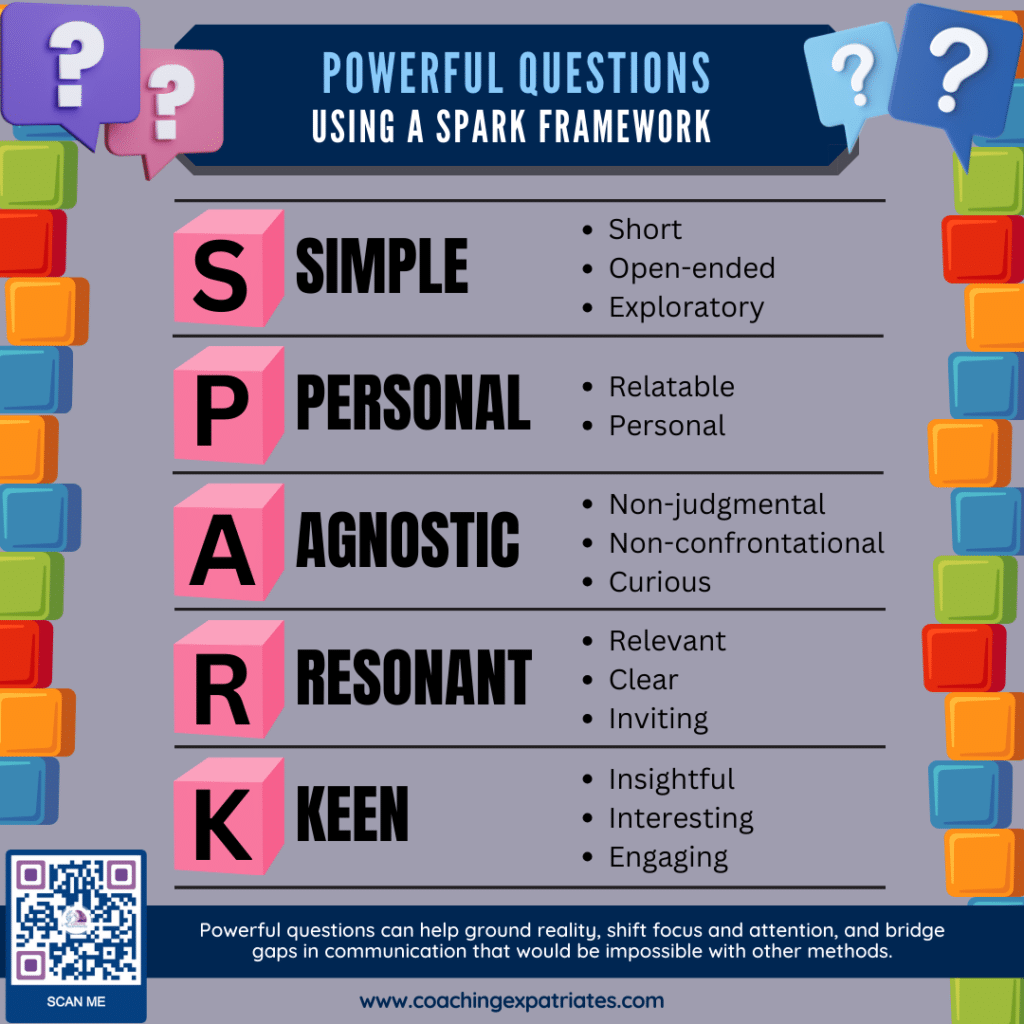
Examples Of Powerful Questions For Many Situations
A lot of people benefit from seeing some examples so that they can extrapolate and apply the idea for themselves. So, I selected some of my favorite Sample Powerful Questions that I use on various occasions, especially with clients during development conversations. You can print this list and have it handy for additional questions catalog while practicing this new skill.
- What’s on your mind when I say this?
- And what else?
- What do you want to create for yourself here?
- What’s your main intention for achieving this?
- How can I make you feel supported?
- How can I help?
- What are you embarrassed to say, but you know I won’t judge you for?
- How do you know you have this as a problem?
- What’s the evidence that this is true?
- What are the facts, and what are the speculations?
- What are you learning or gaining through this experience?
- If you say “yes” to this, what are you saying “no” to?
- What question should I ask you next?
- What am I not asking you about that I should?
- What’s holding you back?
- What’s the real challenge here for you?
- What’s your first step? And how can you commit to it?
- Who else should you talk to in order to make this first step happen?
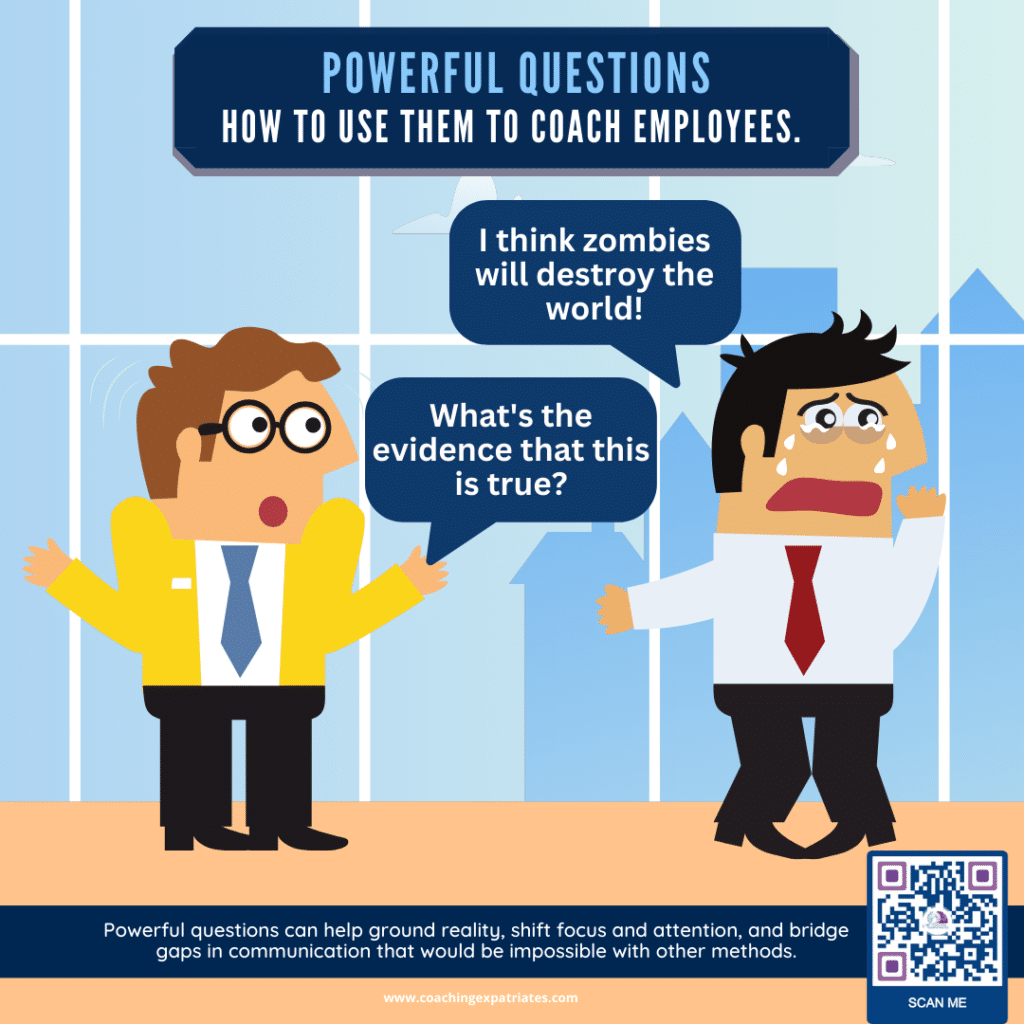
Please notice that one of the questions in this list is my beloved, “What else?” Who knows me knows that I love asking what else. When I learned how to use this specific additional question or follow-up question as a tool, my world opened up. It feels awkward at first to use “what else?” but as soon as you move past this initial awkwardness and start seeing magnificent results, you’ll never forget about using it. Plus, it provides you with a deeper level of knowledge about your current situation, that you wouldn’t have before, because people really come up with new things. You’d be surprised.
Something similar goes to “How can I help?” Let me explain. In a previous blog post, I told you about how amazed I was about the main character of “New Amsterdam,” a series being broadcasted by Netflix, when he started asking all over the hospital, “How can I help?” This question is so powerful because it makes people stop complaining and think about a solution. The beauty of this is that to answer your question, they have to come up with a possible solution that they are asking help with. So it’s the perfect conversation starter and mindset shifter from complaining to solving. That’s why I love it!
Books On Powerful Questions
Here are a few books we curated for you to check out:
The Art of Powerful Questions: Catalyzing Insight, Innovation, and Action
by Eric E. Vogt, Juanita Brown, and David Isaacs (2009)
This book explores the art of asking powerful questions to drive insight, innovation, and action in both personal and professional contexts. It offers practical guidance on designing and using questions effectively to foster creativity and collaboration.
Why it’s worth reading: It provides a comprehensive framework for mastering the skill of asking powerful questions, making it a valuable resource for leaders, coaches, and anyone seeking to improve their communication and problem-solving abilities.
The Coaching Habit: Say Less, Ask More & Change the Way You Lead Forever
by Michael Bungay Stanier (2016)
Michael Bungay Stanier presents a practical guide for leaders and managers, emphasizing the power of asking questions to become more effective coaches. He introduces seven essential coaching questions that can transform leadership and lead to better results.
Why it’s worth reading: This book offers a simple yet highly effective approach to leadership through coaching. It’s concise, actionable, and packed with valuable insights for busy professionals.
Change Your Questions, Change Your Life: 12 Powerful Tools for Leadership, Coaching, and Life
by Marilee Adams (2009)
Marilee Adams provides a transformative framework that focuses on shifting from a “Judger” mindset to a “Learner” mindset through the use of questions. The book offers practical tools and strategies for personal and professional development.
Why it’s worth reading: It not only highlights the importance of questions in personal and professional growth but also offers a roadmap for changing one’s mindset and improving relationships and decision-making.
The World's Most Powerful Leadership Principle: How to Become a Servant Leader
by James C. Hunter (2004)
While not solely focused on questions, this book explores the concept of servant leadership, emphasizing the importance of listening and asking the right questions to understand and serve others effectively.
Why it’s worth reading: It introduces a leadership philosophy that places a strong emphasis on empathy, effective communication, and asking questions to meet the needs of team members and organizations.
Final Remarks
As we wrap up our exploration into the realm of powerful questions, I hope you’ve gained valuable insights into their transformative potential. Whether you’re a seasoned global leader or just starting your journey in the corporate world, harnessing the art of asking powerful questions can be a game-changer. These questions, laden with curiosity and empathy, have the remarkable ability to bridge gaps, spark innovation, and shape the future of your leadership. I truly believe that, and think it’s a powerful skill often overlooked and underused.
Remember, it’s not about having all the answers; it’s about knowing how to ask the right questions at the right time. As I said, sometimes the best answer is a powerful question! So, the next time you find yourself in a challenging corporate situation, don’t hesitate to put your newfound knowledge to the test. Embrace the SPARK technique, draw inspiration from real-world examples, and delve into the wisdom of books dedicated to this powerful art. By doing so, you’ll be on your way to becoming a more effective, empathetic, and influential leader—one question at a time. And with that, let’s venture forth, armed with the formidable tool of powerful questions (print our list!), ready to shape a brighter future in the world of global leadership.
If you are looking for a leadership development partner and consultant to help you improve team engagement and critical thinking, you can hire me as your executive and development coach. Have a Free Strategy Call with me. We will go over your specific needs, and devise together a methodical but fun way to turn your tables on this matter. We will implement practices and ideas together during our coaching journey so you can feel more confident and fulfilled.
If you are interested in developing specific global leadership skills, personally or team-wise, check out our online Global Executive Leadership program. We go over all The Global Leadership Pillars™ during 9 online modules, specially meant for global leadership development. It’s a unique leadership training methodology that will change the way you think, relate, and strategize as a global leader. You can also subscribe to our global leadership podcast, The Leadership Nest.
If you enjoyed this post, consider subscribing to our newsletter using the form below. We focus on providing good content to global leaders and executives who want to make impactful business decisions and be more inclusive and influential. We know your inbox is sacred, so we email just once per week, and we never sell, rent, or do anything funky with your information. Trust is the basis of Global Leadership, and we fully honor it.

